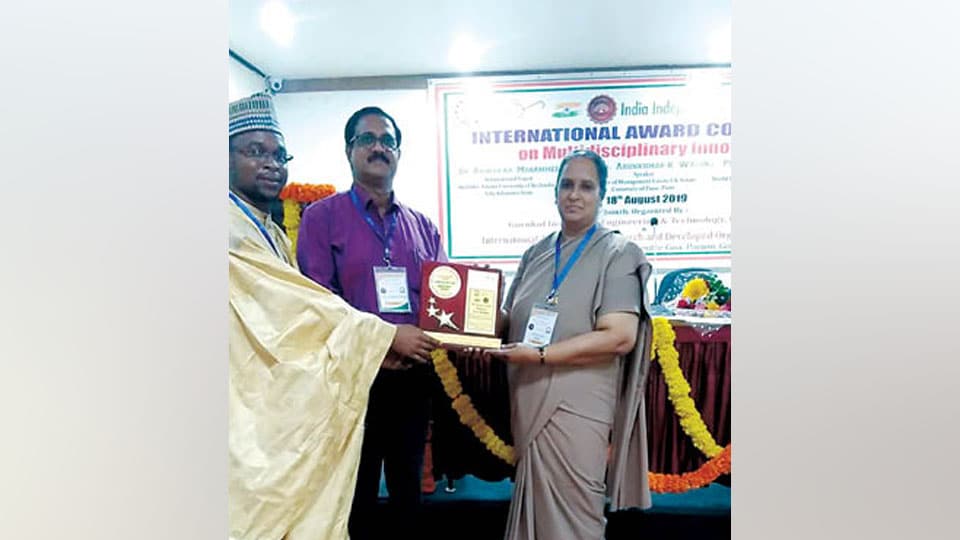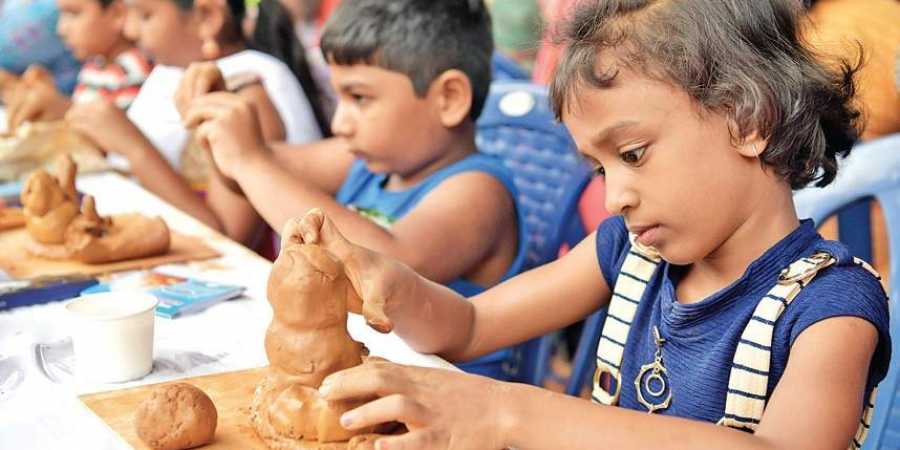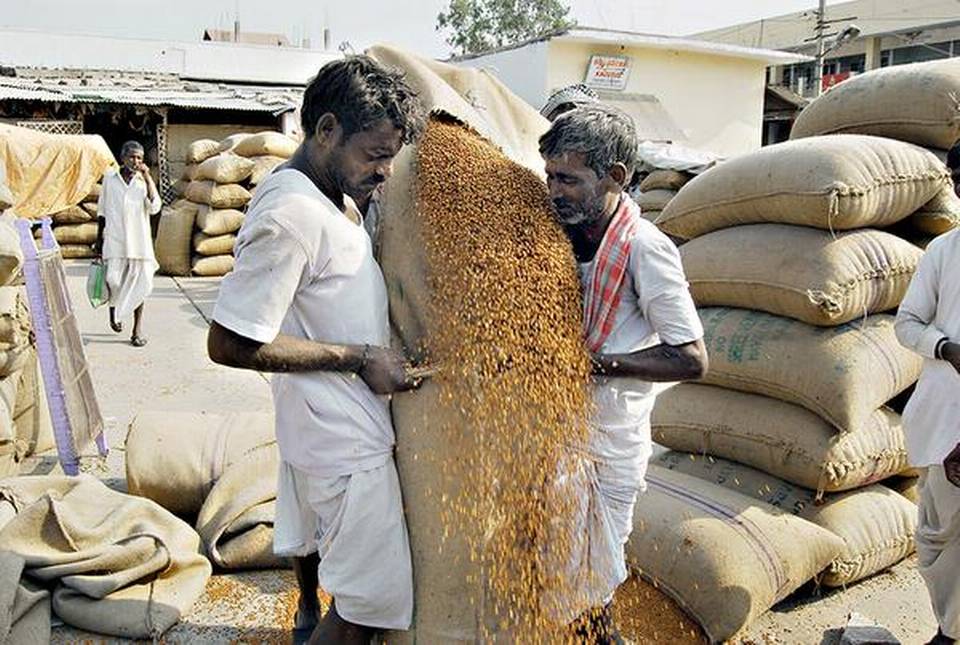Founded in Bengaluru in 1919 by A N Subba Rao, Kalamandir pioneered art education in Karnataka, produced distinguished artists, and encouraged experimentation.

Kalamandir, Karnataka’s first fine arts school, was founded in Bengaluru in 1919. It entered its centenary year on August 12, and marked it with a two-day cultural festival at Ravindra Kalashetra.
Founded by A N Subba Rao, a farmer’s son who developed sophisticated artistic skills, Kalamandir is now run by his grandchildren A M Prakash and Gowri Dattu. Many generations of the family are immersed in the arts, with Subba Rao’s great granddaughter M D Pallavi being a well-known singer and actor.
The school has evolved into a premier institution offering art, literature and drama courses.
Prakash heads the art section while Gowri takes care of Abhinaya Taranga, the school’s theatre wing.
For art and people
Gowri remembers Subba Rao’s ceaseless energy. “I had never seen him sitting idle at home,” is the first thing she says when Metrolife asks her what she remembers of his days.
Distinguished people, such as writer Masti Venkatesha Iyengar, used to visit the school and discuss ideas with him.
“Masti used to bring along chocolates, while grandfather had chakli and kodbale with him. They used to give it to us,” she says.

Subba Rao was inspired by Gandhian ideals, and on one occasion, helped a prostitute marry. Back in the day, the police used to shave off the heads of prostitutes they had caught.
“My grandfather helped one such woman. He gave her a place to stay and found her a groom and got her married. He helped many people and artists this way; he was a people’s man,” she recalls.
But he could also be short-tempered. “That was probably because he used to add so much salt to his food,” Gowri says, laughing.
School’s philosophy
In 1918, Subba Rao was a drawing teacher at Bishop Cotton School. He didn’t like the syllabus. On the advice of legendary engineer M Visvesvaraya, he resigned and started Kalamandir.
Kalamandir was founded at a time when art wasn’t seen as an academic discipline.
Gandhi’s Swadeshi movement was everywhere, and job opportunities were few and far between.
The thought of helping people turn art into a profession occurred to Subba Rao, and he began his school with just four students.
Start with Signboards
Since painting wasn’t popular as a profession, he started off by teaching students to paint signboards in an artistic way.
“Painting signboards was a source of income since every shop needed one back then. He used to teach art through that,” says Prakash.
Subba Rao believed art had to be pursued as a livelihood and not just for art’s sake. “The concept of earn while you learn is picking up now, but my grandfather pioneered it in the 1920s,” he says.
Subba Rao encouraged many young women to take up art. One of them, Kanaka Murthy, is now a world-renowned sculptor.
“He felt they shouldn’t just be in the kitchen, and this was 1919,” Prakash says.
Subba Rao was also firm on teaching the basics to help students develop an aesthetic sense. “You could say the foundation for visual arts as an academic subject were laid by him,” Prakash says.
Subba Rao came to Bengaluru on a cycle and built Karnataka’s first fine arts school. He fought for the inclusion of art in primary education.
“He never bribed the government for the school’s smooth functioning. All the funds came from his friends and art enthusiasts. Now, we just follow his footsteps to promote art,” Prakash told Metrolife.

About the school
Kalamandir is affiliated to Kannada University, Hampi.
The school offers a four-year bachelor’s degree course in visual arts that covers drawing, painting, life study, sculpting, graphic design and digital art.
Kalamandir School of Arts is located on A N Subba Rao Road, 5th Cross, Hanumantha Nagar. Phone 080 2660 6861; email kalamandirschool@gmail.com
Alumni
Rumale Channabasavaiah, Venkatachalapathi, B K S Varma, S S Kukke, S R Swamy, Venkatachalapathi, Rajeev Taranath, Kanaka Murhty, and M S Murthy are among the many distinguished students of Kalamandir.
At the event
Kalamandir hosted a two-day event to mark the 100th year milestone last weekend. Artists and art students thronged to the Ravindra Kalakshetra to catch the celebrations. Panel discussions and plays were presented. The lobby had an exhibition on the life and times of Subba Rao and Kalamandir.
First arts magazine
Between 1930 and 1934, Subba Roa published ‘Kala’, the first-ever magazine in Kannada to cover art, music, painting, dance and theatre.
School locations
– Sugreeva temple, Balepet, in 1919
– Moved to Sharada talkies in 1938
– DVG Road in Gandhi Bazaar in 1944
– Hanumatha Nagar 1978-present
First to host all-India art shows
For the first time in Karnataka’s history, Subba Rao organised the All India Exhibition of Art, Photography and Handicrafts, featuring the works of students and artists from all over the country. He organised it thrice—in 1921, 1927 and 1932.
“He was the first around here to consider photography a visual art form,” says Prakash.
Sir Mirza Ismail, dewan of the erstwhile Mysore state, inaugurated the first exhibition. The second and third editions were inaugurated by Raja Jai Bahadur Singh of Nepal and Durrusehvar Sultan of Hyderabad respectively.
The current generation is still amused by how Subba Rao got in touch with royalty and high officials to invite them to the school’s events. “His invite was a simple handwritten postcard. His handwriting was beautiful. Dewan Mirza Ismail was impressed by his handwriting and attended the event. He also made a speech and granted Rs 50 to the school,” he says.
Gandhi Bazaar of the 1970s
For many decades, Kalamandir functioned from the first floor of a building on DVG Road in Gandhi Bazaar. The school was a cultural hub.
“Girish Karnad read his first play there. P Lankesh’s plays were practised here. Kalamandir was a rehearsal space for them,” says Gowri Dattu, granddaughter of founder Subba Rao.
Kalamandir was a space for healthy discussions on art and literature. “We grew up in a culturally rich environment, even though we didn’t understand everything they were talking about,” she says.
Gandhi’s visit
Also a promoter of khadi, Subba Rao taught block printing on khadi, along with his fine arts courses.
When Gandhi was visiting Bengaluru, the well-known Kannada writer Gorur Ramaswamy Iyengar and Subba Rao wanted him to visit Kalamandir.
Subba Rao painted a piece on khadi woven by Gandhi with his own hands. He displayed it at a khadi art exhibition.
Annie Besant, a leader of the freedom struggle, inaugurated the exhibition. On her insistence, Gandhi visited Kalamandir, which was in the Majestic area then.
“This is how he showed the power of art. It wasn’t a fancy school, but he made big names come to this simple school,” says Prakash.
Challenges
Finance and space are the constraints the school faces today. “It is not a commercial institution. We try to provide our students with everything. If the government takes note of our history and helps us, it would be great,” says Prakash, who now helms Kalamandir.
source: http://www.deccanherald.com / Deccan Herald / Home> Metrolife / by Malini Raghu, DH News Service, Bengaluru / August 27th, 2019









